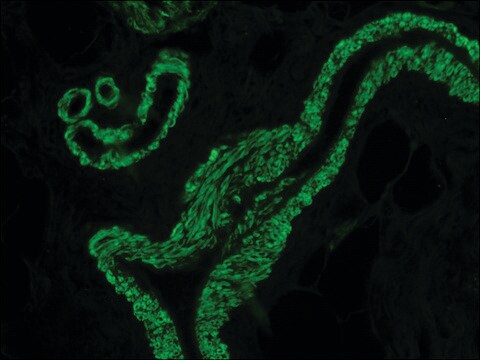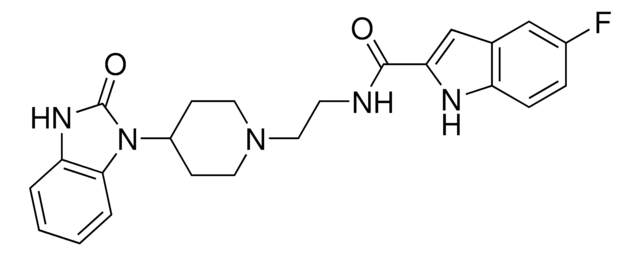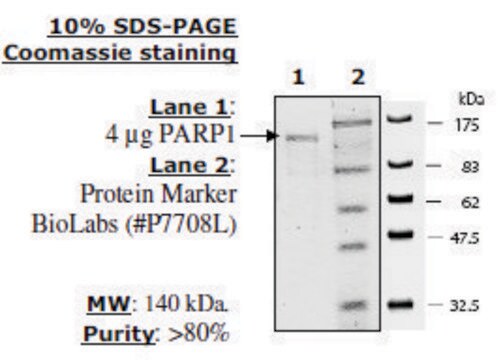F5807
FIPI hydrochloride hydrate
≥98% (HPLC), powder
Sinónimos:
4-Fluoro-N-(2-(4-(5-fluoro-1H-indol-1-yl)piperidin-1-yl)ethyl)benzamide, 5-Fluoro-2-indolyl des-chlorohalopemide hydrochloride hydrate
About This Item
Productos recomendados
Quality Level
assay
≥98% (HPLC)
form
powder
storage condition
desiccated
color
off-white
solubility
DMSO: >20 mg/mL
storage temp.
2-8°C
SMILES string
O.Cl.Fc1ccc2[nH]c(cc2c1)C(=O)NCCN3CCC(CC3)N4C(=O)Nc5ccccc45
InChI
1S/C23H24FN5O2.ClH.H2O/c24-16-5-6-18-15(13-16)14-20(26-18)22(30)25-9-12-28-10-7-17(8-11-28)29-21-4-2-1-3-19(21)27-23(29)31;;/h1-6,13-14,17,26H,7-12H2,(H,25,30)(H,27,31);1H;1H2
InChI key
ZORDQKCXPCXYKL-UHFFFAOYSA-N
Application
Biochem/physiol Actions
signalword
Warning
hcodes
Hazard Classifications
Eye Irrit. 2 - Skin Irrit. 2 - STOT SE 3
target_organs
Respiratory system
Storage Class
11 - Combustible Solids
wgk_germany
WGK 3
flash_point_f
Not applicable
flash_point_c
Not applicable
Elija entre una de las versiones más recientes:
¿Ya tiene este producto?
Encuentre la documentación para los productos que ha comprado recientemente en la Biblioteca de documentos.
Nuestro equipo de científicos tiene experiencia en todas las áreas de investigación: Ciencias de la vida, Ciencia de los materiales, Síntesis química, Cromatografía, Analítica y muchas otras.
Póngase en contacto con el Servicio técnico






